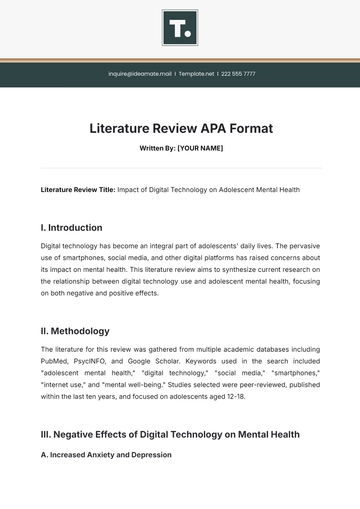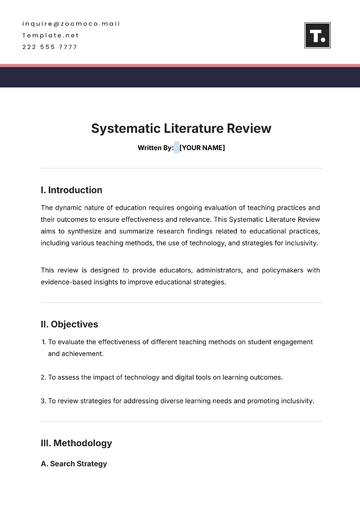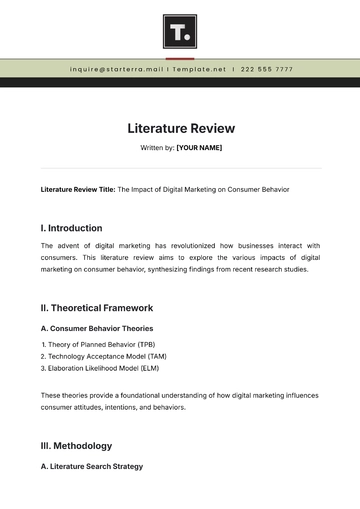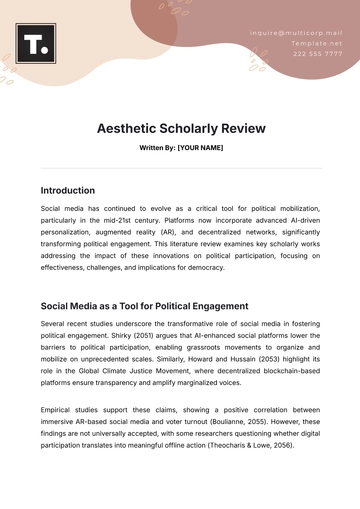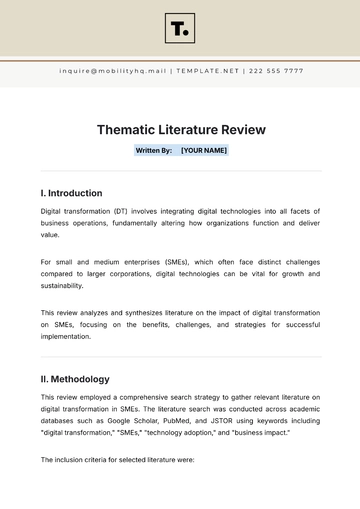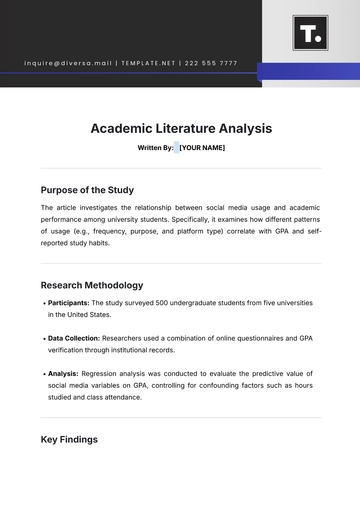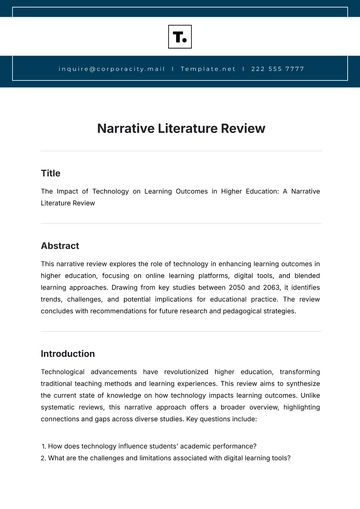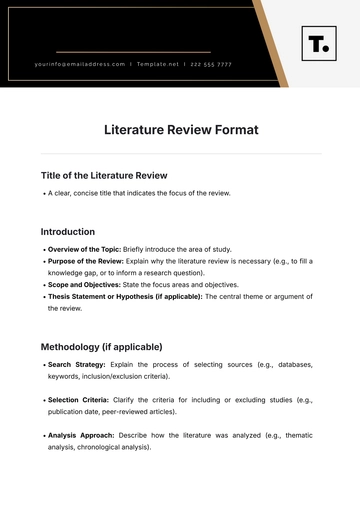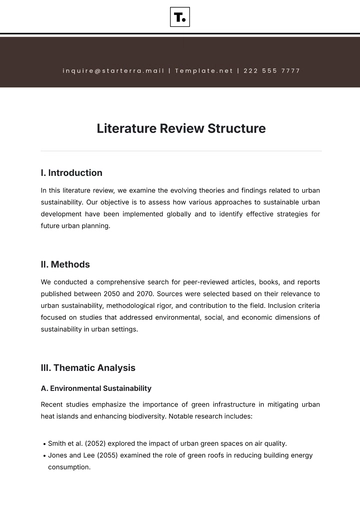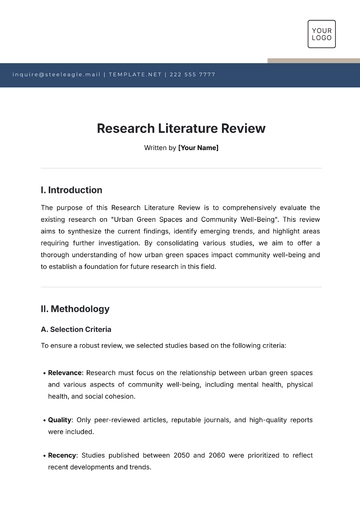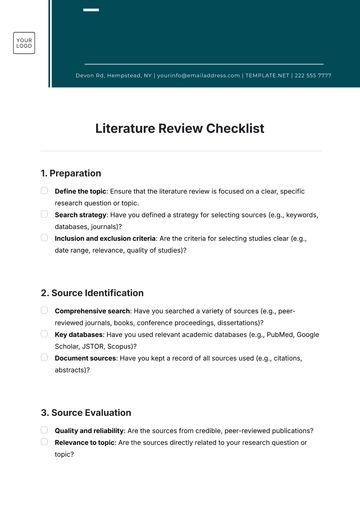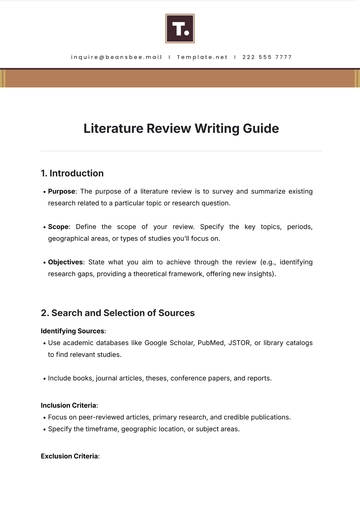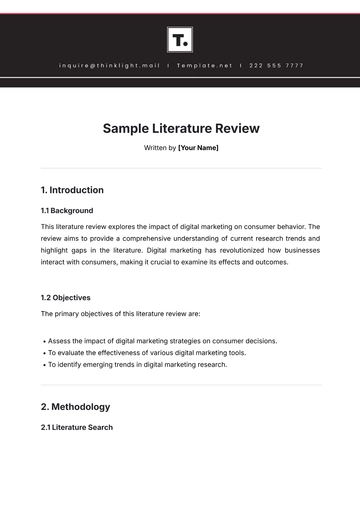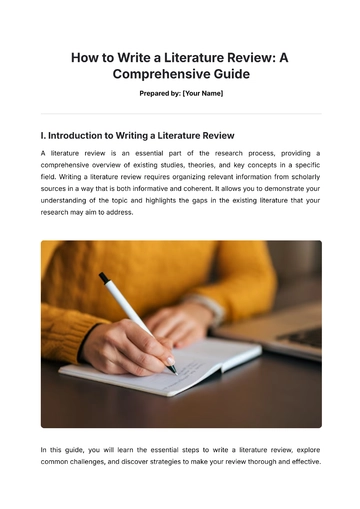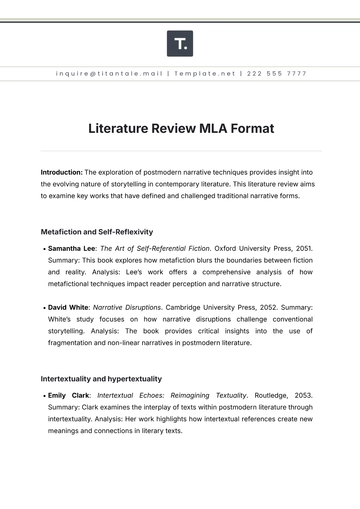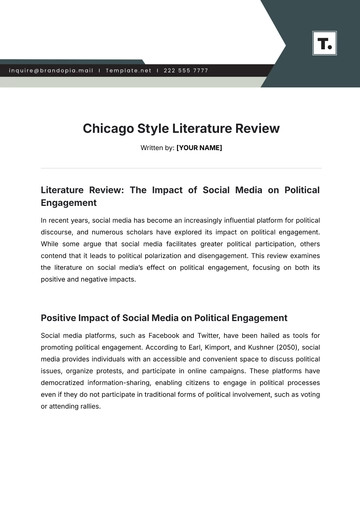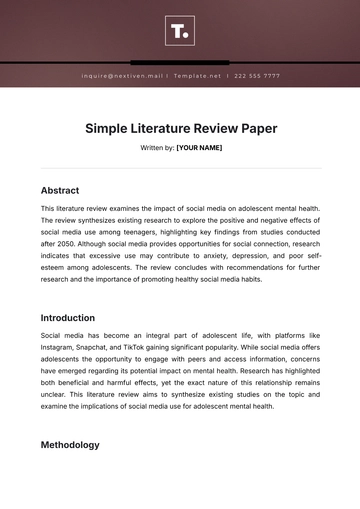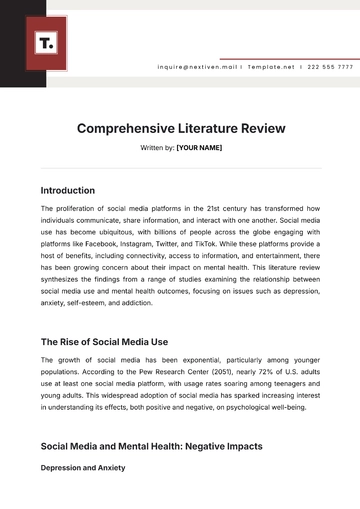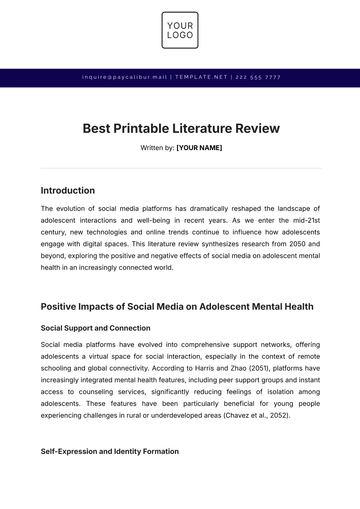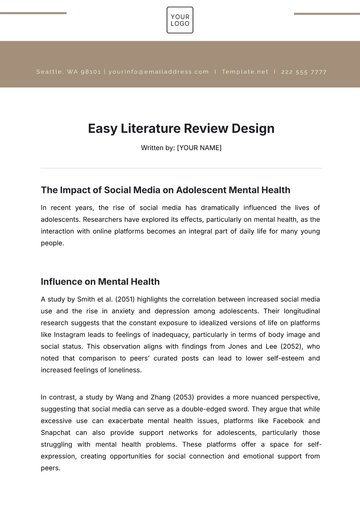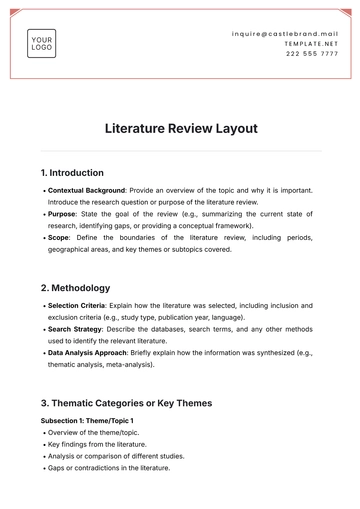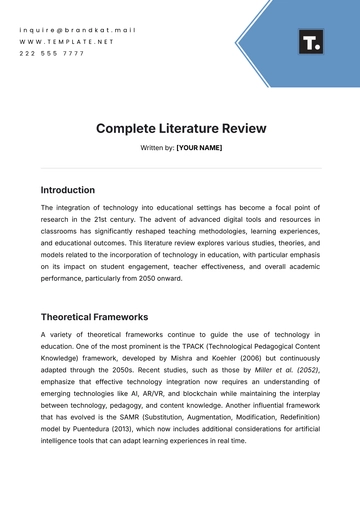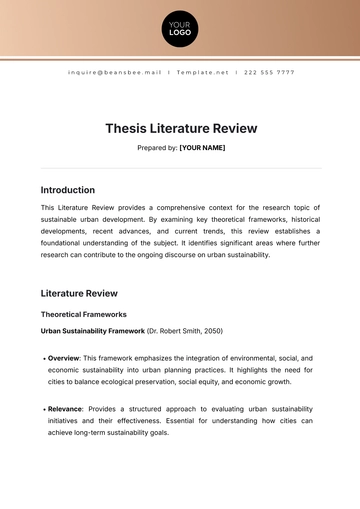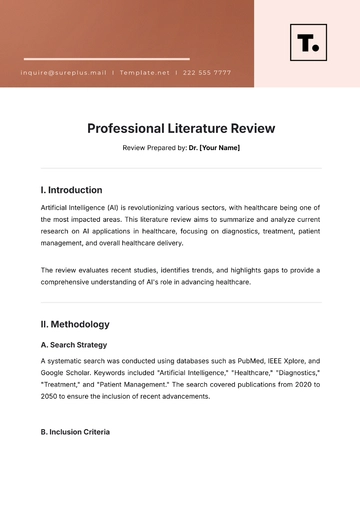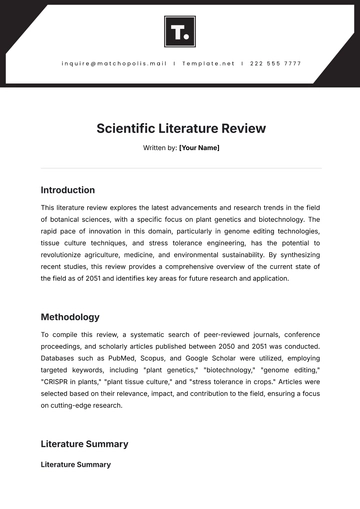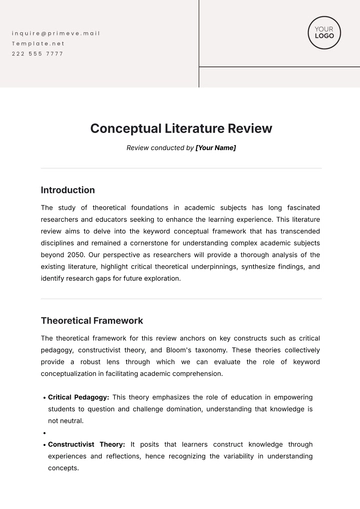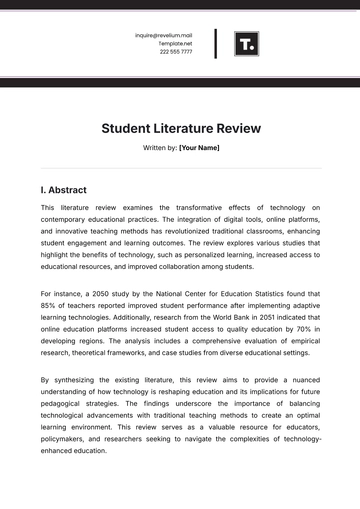Free Humanities Literature Review
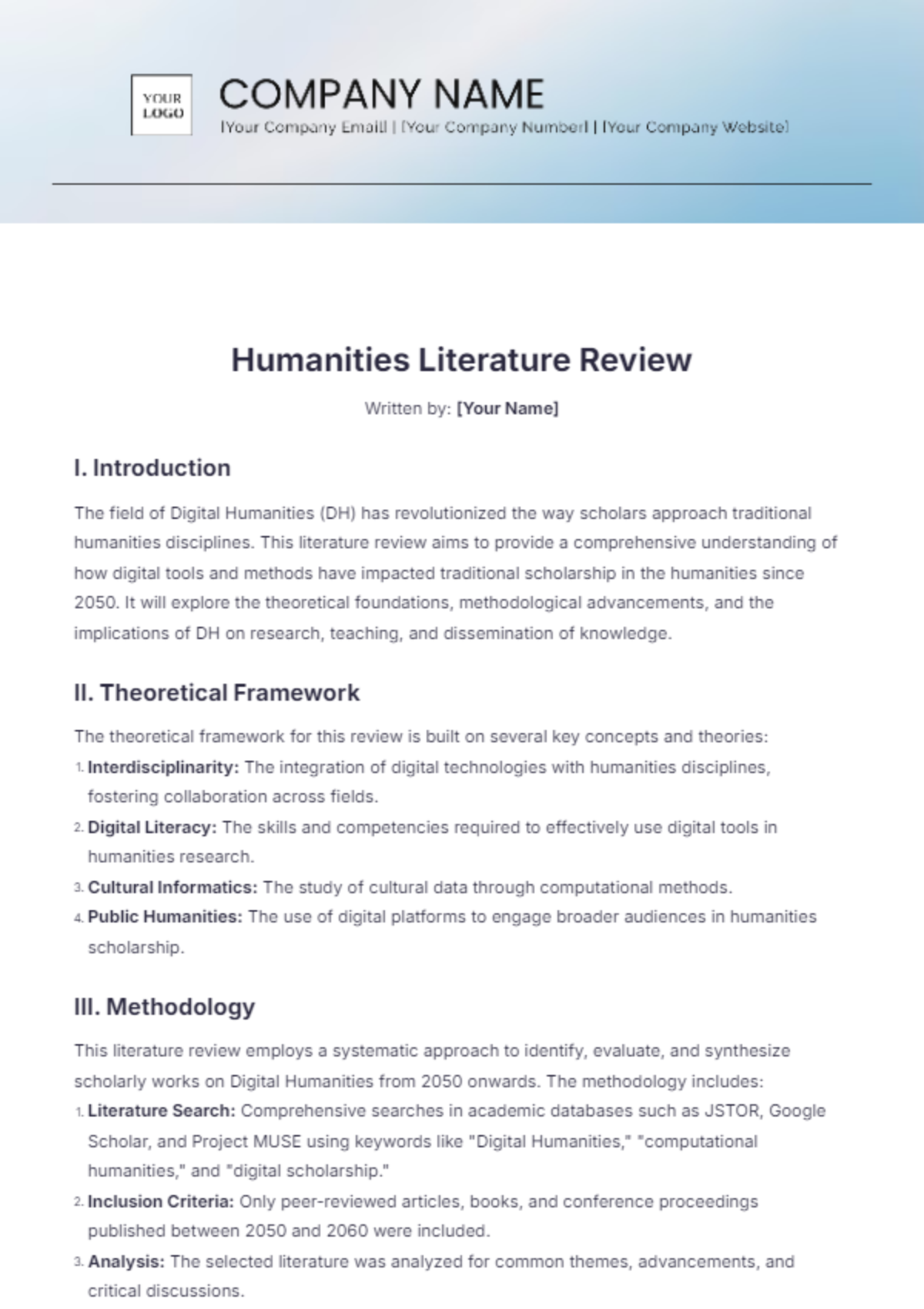
Written by: [Your Name]
I. Introduction
The field of Digital Humanities (DH) has revolutionized the way scholars approach traditional humanities disciplines. This literature review aims to provide a comprehensive understanding of how digital tools and methods have impacted traditional scholarship in the humanities since 2050. It will explore the theoretical foundations, methodological advancements, and the implications of DH on research, teaching, and dissemination of knowledge.
II. Theoretical Framework
The theoretical framework for this review is built on several key concepts and theories:
Interdisciplinarity: The integration of digital technologies with humanities disciplines, fostering collaboration across fields.
Digital Literacy: The skills and competencies required to effectively use digital tools in humanities research.
Cultural Informatics: The study of cultural data through computational methods.
Public Humanities: The use of digital platforms to engage broader audiences in humanities scholarship.
III. Methodology
This literature review employs a systematic approach to identify, evaluate, and synthesize scholarly works on Digital Humanities from 2050 onwards. The methodology includes:
Literature Search: Comprehensive searches in academic databases such as JSTOR, Google Scholar, and Project MUSE using keywords like "Digital Humanities," "computational humanities," and "digital scholarship."
Inclusion Criteria: Only peer-reviewed articles, books, and conference proceedings published between 2050 and 2060 were included.
Analysis: The selected literature was analyzed for common themes, advancements, and critical discussions.
IV. Main Body
Advancements in Digital Tools and Methods
Textual Analysis
Natural Language Processing (NLP): Enhanced methods for analyzing large corpora of texts, allowing for deeper semantic understanding.
Text Mining: Automated techniques for discovering patterns and trends in literary and historical texts.
Digital Editions: The creation of interactive, annotated digital editions of classical and historical texts.
Data Visualization
Geospatial Analysis: The use of Geographic Information Systems (GIS) to map historical events, literary settings, and cultural phenomena.
Network Analysis: Visualization of relationships and connections within large datasets, such as social networks in historical documents.
Interactive Timelines: Tools for creating dynamic timelines to visualize historical and literary developments.
Implications for Research
Enhanced Access: Digital archives and databases have made primary sources more accessible to researchers worldwide.
New Research Questions: Computational methods have enabled scholars to ask new types of questions and uncover previously hidden patterns.
Collaborative Research: Digital platforms facilitate collaboration among scholars from different disciplines and institutions.
Implications for Teaching
Innovative Pedagogies: The integration of digital tools in the classroom, such as virtual reality for historical reenactments and interactive maps for literature studies.
Digital Projects: Students engage in creating digital projects, enhancing their research and technical skills.
Open Access Resources: The proliferation of open-access journals and online courses, makes educational resources widely available.
Dissemination of Knowledge
Digital Publications: The rise of digital journals and monographs, allowing for multimedia content and interactive features.
Public Engagement: Digital platforms, such as blogs and social media, for sharing research with the public and fostering community involvement.
Preservation and Sustainability: Efforts to ensure the long-term preservation of digital humanities projects and data.
IV. Discussion
The integration of digital technologies into humanities scholarship has transformed the field in several ways:
Challenges: The digital divide, issues of digital preservation, and the need for ongoing training in digital literacy.
Opportunities: Greater accessibility of resources, the potential for new interdisciplinary collaborations, and the ability to engage with wider audiences.
Future Directions: Continued development of digital tools, the importance of ethical considerations in digital scholarship, and the need for sustainable funding models.
V. Conclusion
Since 2050, Digital Humanities has significantly impacted traditional scholarship by introducing new tools and methodologies, enhancing research and teaching practices, and broadening the dissemination of knowledge. While challenges remain, the opportunities presented by DH continue to push the boundaries of what is possible in the humanities. Future research should focus on addressing these challenges and exploring new frontiers in digital scholarship.
VI. References
Smith, J. (2051). Digital Humanities: An Introduction. University Press.
Johnson, A., & Lee, K. (2052). Computational Methods in Historical Research. Journal of Digital History, 12(3), 45-67.
Martinez, R. (2053). Geospatial Analysis in Literature Studies. Literary Mapping Journal, 8(1), 23-38.
Brown, T., & Green, M. (2054). Interactive Digital Editions: Best Practices. Digital Humanities Quarterly, 15(2), 78-99.
Wilson, P. (2055). The Role of Digital Tools in Teaching Humanities. Journal of Digital Pedagogy, 10(4), 56-74.
- 100% Customizable, free editor
- Access 1 Million+ Templates, photo’s & graphics
- Download or share as a template
- Click and replace photos, graphics, text, backgrounds
- Resize, crop, AI write & more
- Access advanced editor
Streamline your research with the Humanities Literature Review Template from Template.net. This fully customizable and editable template simplifies your work, allowing you to focus on analysis rather than formatting. With the integrated AI Editable Tool, you can tailor every section to fit your specific needs effortlessly, ensuring a polished and professional review every time.

